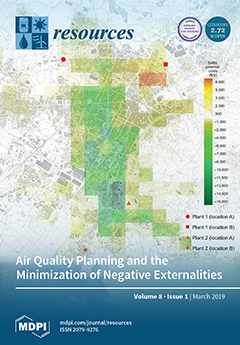This study aimed to assess the bioremediation of soils polluted with fuel oil 6 (FO6) using diffuse reflectance (DR) spectroscopy in the visible and near infrared (Vis-NIR) electromagnetic spectrum. To achieve our goal, we determined the spectral signature of fuel oil 6 (FO6),
[...] Read more.
This study aimed to assess the bioremediation of soils polluted with fuel oil 6 (FO6) using diffuse reflectance (DR) spectroscopy in the visible and near infrared (Vis-NIR) electromagnetic spectrum. To achieve our goal, we determined the spectral signature of fuel oil 6 (FO6), developed a calibration model to quantify the total petroleum hydrocarbons (
TPH), and assessed the bioremediation in soils contaminated with FO6 and inoculated with
Pseudomonas aeruginosa. Surface soil samples (SS) (0–30 cm depth) from uncontaminated Entisol soil from Termoesmeraldas Thermal Power Plant, Ecuador and quart sand (QS) samples were spiked with FO6 at a known contamination of 0.5, 1, 3, 6, 9, 12 wt.% on a gravimetric basis. A sample of contaminated Entisol soil was taken to isolate
P. aeruginosa from a spill site located in Termoesmeraldas.
P. aeruginosa was successfully augmented in a molasses medium. The results suggested that the C–H stretch combination overtone band around 2300 nm is the one that makes the significant contribution to the FO6 spectral signature and for the analysis of FO6 contaminated Entisols soil. The calibration model for QS samples and SS showed an excellent agreement with experimental data R2 = 0.9989 and R2 = 0.9968, respectively. The
TPH at 0, 7, 14, 21, and 23 days after inoculation were found using a calibration model developed and the Unach hydrocarbon index (
UHI). While the QS samples showed the lower recovery rate (13.6%), the Entisols SS showed the higher recovery rate (45.8%) in 23 days. The use of DR spectroscopy and determination of the FO6 spectral signature allowed the assessment of the bioremediation process of QS and Entisols SS samples. The results showed that DR decreased with increasing the FO6 concentration and soil properties affected the degree of biodegradation.
Full article





